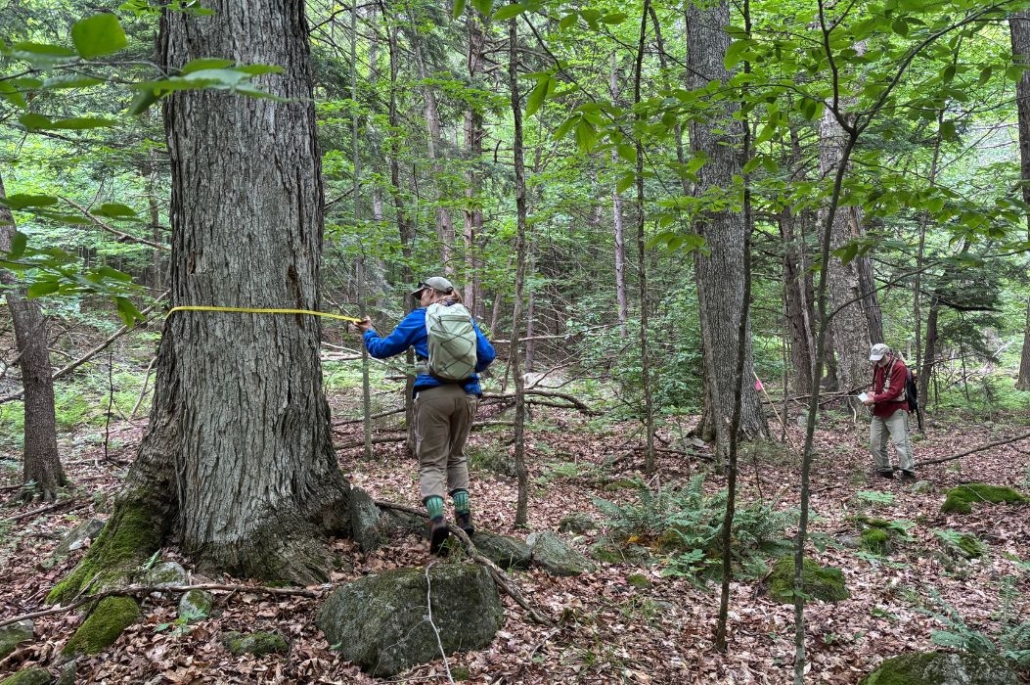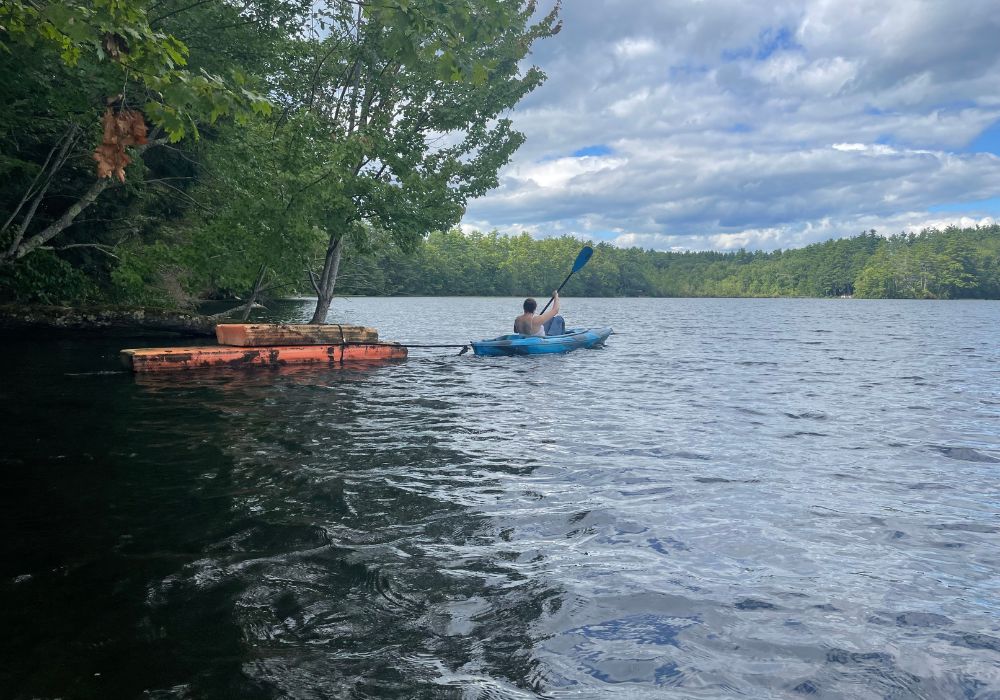Rate That Snag!
A frequent sight on Northeast Wilderness Trust’s (NEWT) forever-wild preserves and easements is coarse woody debris (CWD). CWD is the wood that accumulates in forests as trees and shrubs die. Tree mortality is a natural part of forest ecosystems, and the resulting CWD is a crucial ecological element that provides homes for insects, birds, and mammals and recycles nutrients back into forest soils.
One of the most recognizable forms of CWD is standing dead trees, also called “snags.” Managed timberlands often lack snags because logging operations prioritize tidy, navigable landscapes. But on NEWT properties, they are a common and welcome feature of “messy” old forests that support greater species diversity and sequester more carbon.
The forests at NEWT’s Muddy Pond Wilderness Preserve in southeastern Massachusetts are no exception. Since coming under forever-wild protection in 2018, Muddy Pond’s 322 acres in Kingston have been on the march toward old growth. Part of that rewilding process involves the death of old or weakened trees, which remain standing at Muddy Pond to continue contributing, as they did in life, to the Preserve’s ecology.
Changing the Conversation
Among the hundreds of species of birds, mammals, reptiles, insects, and amphibians that call them home, Muddy Pond’s snags also have a two-legged admirer: NEWT’s Southern New England Land Steward Joe Falconeiri.
You might call Falconeiri a dead-wood devotee. When hosting groups of students or volunteers at the Preserve, or giving talks in the wider area about wildlands stewardship, Falconeiri always sings the praises of CWD as a vital but overlooked—and misunderstood—feature of healthy forest ecosystems. He finds that for most people, from high-school students to arborists, dead trees are eyesores or risks. And while he acknowledges that dead trees in suburban settings can become hazardous depending on their surroundings and proximity to humans and human-made structures, he contends that this obscures their ecosystem role. A group of dead and dying trees at his home in Massachusetts, for example, hosts nesting Northern Flickers, a woodpecker species.
“Snags are anything but ‘hazardous’ when looking at them from an ecological perspective,” Falconeiri said. “Within the forest, they are the opposite of hazardous. Public safety is an important part of the conversation in suburban environments, but we need to define what ‘hazardous’ really means. This is why wilderness education in our communities and region is so critical.”
Part of that education involves encouraging people and communities to rethink their view of dead trees as blemishes on the landscape. If we learn to admire snags in the same way we admire a towering hemlock or a majestic oak, might we in turn become more comfortable with CWD and the other aspects of unmanaged forests that promote biodiversity and greater carbon storage?
To that end, Falconeiri has photographed some of the most eye-catching dead trees at Muddy Pond. Check out the photos below and their captions to see how this snag specialist ranks his favorite specimens.
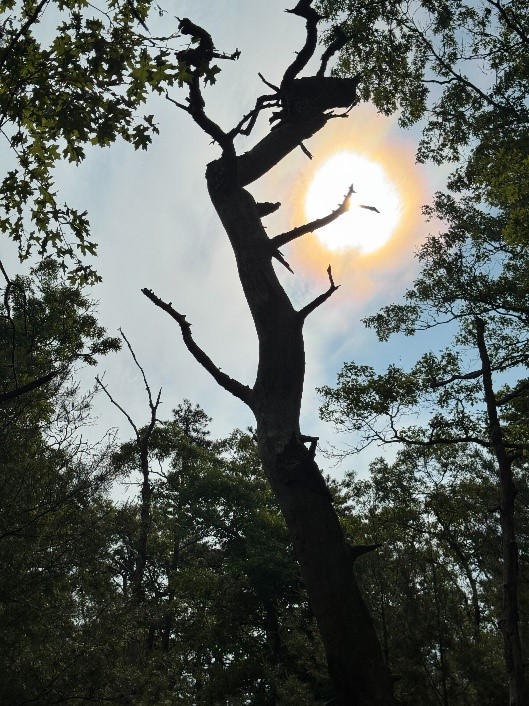
Joe’s Rating: 10/10
“This beauty stands out in the middle of the forest on a high point. With a few large woodpecker cavities visible, and a smooth, monotone, barkless veneer, it is the perfect perch for local owls, hawks, and Muddy Pond’s visiting Bald Eagle.”
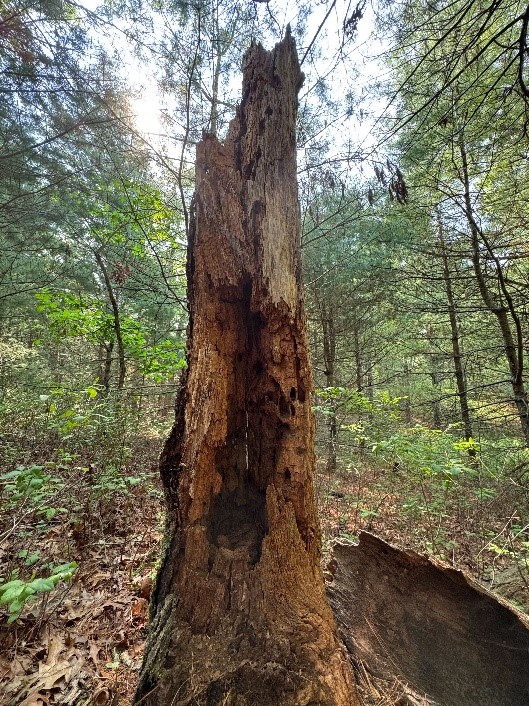
Joe’s Rating: 8.2/10
“This short and stout coniferous snag showed lots of insect and carpenter ant activity. It would be a perfect dinner or snack spot for the local Prairie Warbler or Downy Woodpecker, or even a forage opportunity for a fox.”
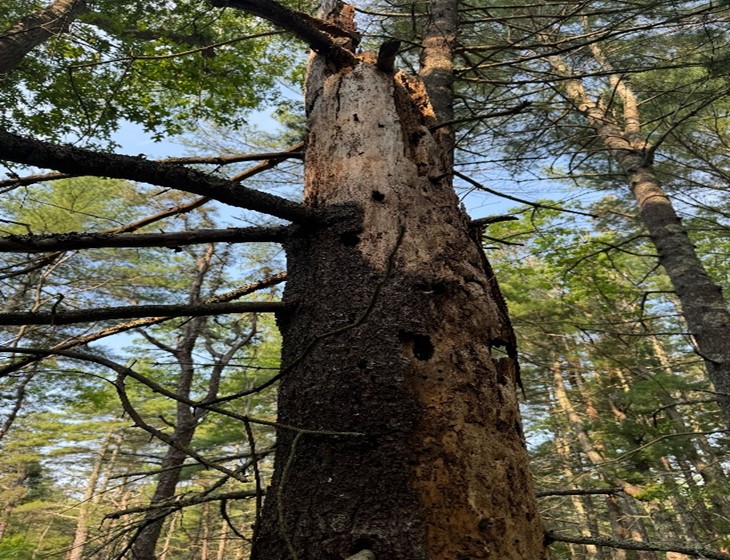
Joe’s Rating: 8.4/10
“Old eastern white pine with multiple cavities showing the grand beauty of standing decomposition and decay. This grandiose testament to Nature’s cycles rises out of the black huckleberry understory below. Will we listen to the life lessons it offers?”
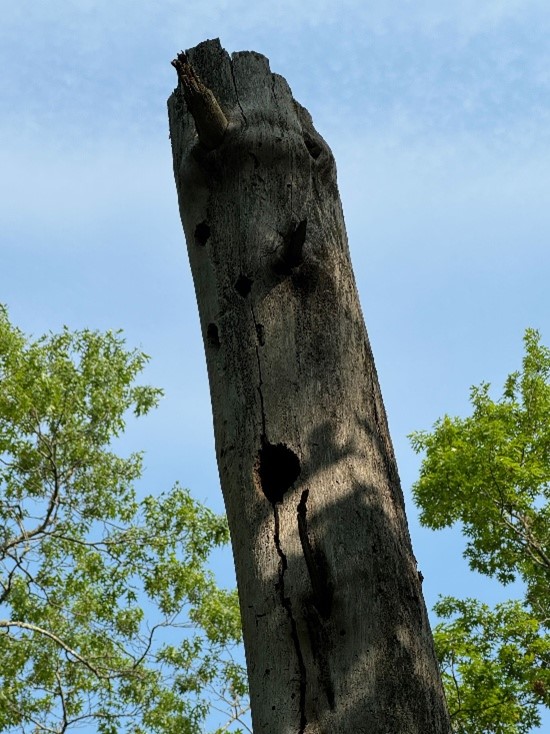
Joe’s Rating: 7.5/10
“Major cavity sitting high in old oak tree deep in the forest. Stable and sturdy hardwood snags not only make a nice nesting spot for woodpecker species; they can be welcome homes to secondary cavity nesters such as raccoons and owls.”
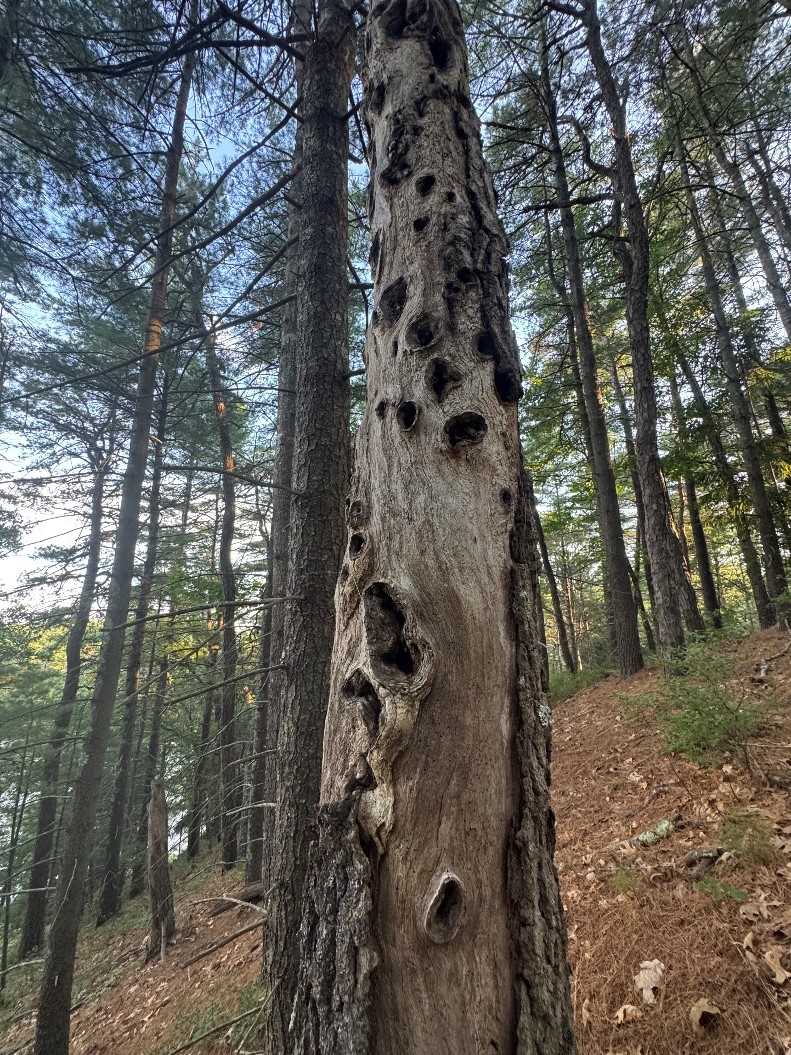
Joe’s Rating: 9/10.
“Multiple woodpecker cavities and a partially hollow trunk equal great potential for biodiversity. The cavities offer real estate for secondary nesters such as Black-capped Chickadees, Tufted Titmice, squirrels, and owls. My good ol’ friend the Blue Jay and others may also use the cavities for food storage.”


